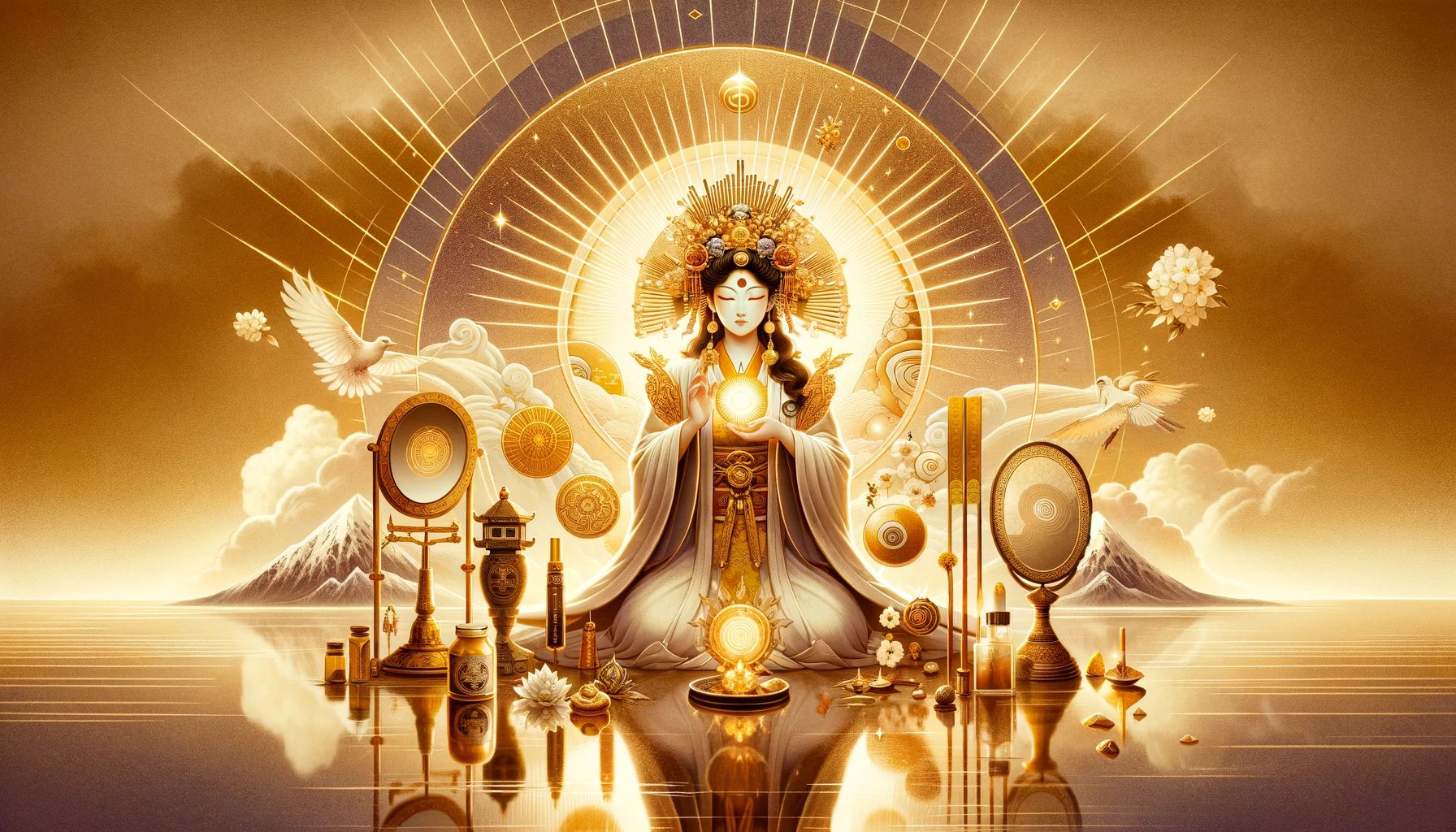Life Style
Symbolism of Fire in Greek and Japanese Creation Myths

Fire has been a symbol of transformation, creation, and destruction in various cultures throughout history. In Greek and Japanese creation myths, fire holds a prominent place, reflecting the values, beliefs, and understanding of the natural world by these ancient civilizations. This essay explores the symbolism of fire in Greek and Japanese creation myths, highlighting the cultural significance and thematic parallels between these two traditions.
Greek Creation Myths
In Greek mythology, fire is intimately connected with the Titan Prometheus, whose name means “forethought.” Prometheus is known for his intelligence and as a champion of humankind. The most famous myth involving Prometheus is his theft of fire from the gods to give to humanity. This myth illustrates several key aspects of fire’s symbolism in Greek culture.
Prometheus and the Theft of Fire
Prometheus’s theft of fire is a foundational myth in Greek culture. By stealing fire from the gods and giving it to humans, Prometheus symbolizes the transfer of divine knowledge and power to mankind. Fire, in this context, represents enlightenment, technology, and civilization. It is through fire that humans can cook food, forge tools, and create art, thereby distinguishing themselves from animals and ascending to a higher level of existence.
However, this act of defiance against Zeus, the king of the gods, also introduces themes of rebellion and punishment. Prometheus’s punishment for his transgression—being bound to a rock where an eagle eats his liver daily—highlights the dangerous and dual nature of fire. While fire can be beneficial and life-sustaining, it also has the potential for great destruction if misused or obtained illicitly.
Hephaestus and the Forge
Another significant figure in Greek mythology associated with fire is Hephaestus, the god of blacksmiths, craftsmen, artisans, and fire. Hephaestus’s forge, where he creates weapons for gods and heroes, is a powerful symbol of fire’s creative and transformative powers. Through Hephaestus, fire is depicted as a tool of creation and craftsmanship. It is the force that shapes raw materials into something useful and beautiful, emphasizing fire’s role in technological progress and artistic expression.
Hephaestus’s association with volcanic activity further underscores the destructive and uncontrollable aspect of fire. Volcanoes, with their fiery eruptions, are natural manifestations of fire’s untamed power, serving as reminders of the fine line between creation and destruction.
Japanese Creation Myths
In Japanese mythology, fire also plays a crucial role, particularly in the myths surrounding the creation of the world and the gods. The Shinto religion, with its rich pantheon of kami (deities or spirits), includes several stories where fire is a central element.
Izanami and the Birth of Fire
One of the most significant myths involving fire in Japanese culture is the story of Izanami and Izanagi, the divine couple who created the islands of Japan. After giving birth to numerous deities, Izanami dies during the birth of Kagutsuchi, the fire god. This tragic event underscores fire’s dual nature: it is a force of life and creation, but it can also bring death and destruction.
The death of Izanami due to the birth of Kagutsuchi highlights the inherent danger of fire. It suggests that the creative power of fire is inextricably linked to its potential for harm. The subsequent actions of Izanagi, who kills Kagutsuchi in a fit of rage, further emphasize the destructive aspect of fire. However, from Kagutsuchi’s body, more deities are born, symbolizing the regenerative power of fire even in the midst of destruction.
The Rituals and Festivals
Fire holds a sacred place in various Japanese rituals and festivals. For instance, the annual fire festival known as “Hi Matsuri” is held in many parts of Japan to purify and drive away evil spirits. This ritualistic use of fire underscores its purifying and protective qualities. In Shintoism, fire is seen as a cleanser that can ward off malevolent forces and bring renewal and purification to individuals and communities.
The symbolism of fire in these rituals connects to the idea of renewal and the cyclical nature of life and death. Fire destroys the old and impure, making way for new growth and purity. This cyclical perspective on fire aligns with the broader Shinto belief in the interconnectedness of all things and the continuous flow of life energy.
Comparative Analysis
The symbolism of fire in Greek and Japanese creation myths reveals both similarities and differences that reflect the unique cultural contexts of each tradition.
Similarities
- Dual Nature: In both Greek and Japanese myths, fire embodies a dual nature, capable of creation and destruction. This duality underscores the complexity of fire as a symbol and its powerful impact on human life.
- Divine Knowledge and Power: Fire is associated with divine knowledge and power in both cultures. Prometheus’s gift of fire to humanity and the birth of Kagutsuchi both represent the transmission of a vital force from the divine to the mortal realm.
- Punishment and Consequences: Both traditions acknowledge the potential consequences and dangers of fire. Prometheus’s punishment and Izanami’s death highlight the risks associated with possessing and using fire.
Differences
- Cultural Context: Greek mythology often emphasizes the rebellious and individualistic aspects of fire, as seen in the defiance of Prometheus. In contrast, Japanese myths tend to focus on the harmonious and purifying aspects of fire, aligning with the Shinto emphasis on balance and renewal.
- Role of Deities: In Greek mythology, fire is closely linked with specific deities like Prometheus and Hephaestus, who embody the creative and technological aspects of fire. In Japanese mythology, fire is more often personified through natural phenomena and rituals, reflecting the Shinto belief in the sacredness of nature.
- Ritual Use: Japanese culture places a strong emphasis on the ritualistic use of fire for purification and protection, as seen in various festivals and ceremonies. This ritualistic use is less pronounced in Greek mythology, where fire’s symbolism is more focused on individual myths and deities.
Conclusion
Fire, as a symbol, holds a profound and multifaceted place in both Greek and Japanese creation myths. It represents the transformative power of nature, the transmission of divine knowledge, and the delicate balance between creation and destruction. While both cultures acknowledge fire’s dual nature, their myths and rituals reflect different aspects of this powerful element, shaped by their unique cultural contexts and beliefs.
In Greek mythology, fire’s symbolism is closely tied to themes of rebellion, punishment, and technological advancement, embodied by figures like Prometheus and Hephaestus. In Japanese mythology, fire is associated with purification, renewal, and the cyclical nature of life, reflected in the stories of Izanami and Izanagi and various fire rituals.
Ultimately, the symbolism of fire in these creation myths highlights the universal human fascination with this elemental force and its profound impact on our understanding of the world and our place within it.
-

 Fashion3 months ago
Fashion3 months agoCelebrity Style Spotlight: Iconic Slip Dress Moments of 2024
-

 US News4 months ago
US News4 months agoThe Evolution and Impact of SimCity Forums on the Gaming Community
-

 Business6 months ago
Business6 months agoUnderstanding Cloudiness in Urine: Causes, Symptoms, and Treatment
-

 Entertainment3 months ago
Entertainment3 months agoDavid Njoku: Unveiling the Facts About His Sexual Orientation

















